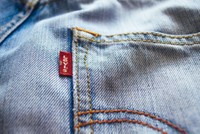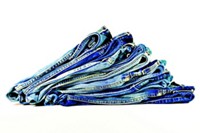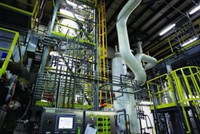Advertisement
Grab your lab coat. Let's get started
Welcome!
Welcome!
Create an account below to get 6 C&EN articles per month, receive newsletters and more - all free.
It seems this is your first time logging in online. Please enter the following information to continue.
As an ACS member you automatically get access to this site. All we need is few more details to create your reading experience.
Not you? Sign in with a different account.
Not you? Sign in with a different account.
ERROR 1
ERROR 1
ERROR 2
ERROR 2
ERROR 2
ERROR 2
ERROR 2
Password and Confirm password must match.
If you have an ACS member number, please enter it here so we can link this account to your membership. (optional)
ERROR 2
ACS values your privacy. By submitting your information, you are gaining access to C&EN and subscribing to our weekly newsletter. We use the information you provide to make your reading experience better, and we will never sell your data to third party members.
Business
High-end Innovation Leads Textile Dyes
Faced with Asian overcapacity, major suppliers boost product performance
by Rick Mullin
October 11, 2004
| A version of this story appeared in
Volume 82, Issue 41

Textile dyes date back to the Bronze Age. They also constitute an archetypical 21st-century specialty chemicals market.
COVER STORY
High-End Innovation Leads Textile Dyes
Three large, Europe-based producers dominate. The largest, DyStar, was formed in a series of mergers of some of Europe's major textile dye businesses in the 1990s. Global overcapacity and price pressure, stoked by the rapid buildup of Asian producers, have turned most dyestuff chemistries into commodities. Regulatory hurdles have nearly halted the introduction of fundamentally new dyestuffs. Revenues at the three major suppliers are slipping this year compared with last year.
Yet executives at DyStar, Ciba Specialty Chemicals, and Clariant say innovation has ramped up over the past 10 years and that new chemistry is being brought to bear in reactive and dispersant dyes as well as in older dyestuffs such as sulfur dyes.
The key route to growth--and to keeping Asian bulk dyestuff producers at bay--they say, comes straight out of specialty chemicals strategy 101: Differentiate product offerings through collaborative work with customers and charge a premium price for specialized products that solve specific problems.
This is an effective approach, given that these suppliers manufacture in China, India, Pakistan, and Brazil as well as in the U.S. and Europe, and that major textile manufacturers aim to maintain uniform quality and product performance across the globe. The goal, producers say, is to lock in high-end chemicals that local suppliers in Asia cannot supply.
"There is 30 to 40% overcapacity in the market from Asia, primarily China," says Peter S. Collishaw, marketing director for cellulose dyes at DyStar. "It won't be long before they have the capacity to manufacture the world's total demand." But Asian producers largely make a limited number of low-cost, basic dyestuffs, he says. "The whole point of our research is to develop products that meet new market needs. We are driven by differentiation, not just mass production of commodities."
Collishaw says new detergents, fibers, and uses for textiles are generating tougher specifications for dyes. The need for lightfast dyes in dark shades, for colors that do not run when washed, and for protection from perspiration continually raises the bar for dye producers, he says.
Seigfried Winkelbeiner, head of textile dye marketing at Ciba, agrees that growth depends on innovation and differentiation. He notes, however, that of the 180,000-ton-per-year worldwide market for dispersed dyes, specialty dyes comprise only about 5,000 tons. The rest is made up of commodities covering a range of about 15 colors.
Winkelbeiner says improvements in ecological and toxicological performance go hand-in-hand with improved efficiency in manufacturing and performance. In particular, Ciba is working on improving the fixation rate for reactive dyes, the primary dye type for cellulose fibers such as cotton.
According to Winkelbeiner, fixation has always been a variable in applications where monochlorotriazine dyes are applied to fibers in an alkali solution. Both the alkali and the fiber have a hydroxy group that reacts with the dye, so that as much as 40% of the dye can react with the alkali and be washed off as waste. Ciba's new Cibacron S dyes introduce "thrice-reactive" chemistry, with up to three chlorine or fluorine anchors that are also exchanged with cotton fibers, he says.
In polyester dyes, Ciba is developing "washfast" chemistry--dyes that do not run in high-temperature washers and dryers. Winkelbeiner explains that dyes are applied to fibers at about 130 °C, at which point fibers expand to absorb the dyes. But high-temperature washing and drying also can cause the fibers to "open," reversing the dyeing process and allowing colors to bleed out.
Ciba's new Terasil WW polyester dyes incorporate benzodifuranone chemistry. "It's a structurally complex chemistry," he says. "The molecules can't easily get out of the fiber." Of course, it's also difficult for such molecules to get in. But Winkelbeiner says Ciba has formulated the dyes so that they become partially soluble during the dye application. The Terasil WW line was introduced in 2002 and is now being used by apparel manufacturers including Nike and Adidas.
DyStar is a major player in reactive dyes, which were developed 50 years ago at ICI. DyStar, which was recently purchased by Platinum Equity, is made up of the dyes business of the original ICI, as well as those of Bayer, BASF, and Hoechst.
INCREASING FIXATION rates for reactive dyes is a kind of Holy Grail, according to Collishaw. "The elusive target is 100% fixation of reactive dye on cellulose," he says, noting that while cationic dyes on acrylic fibers and dispersed dyes on polyester generally fix in the high-90% range, years of work on reactive dyes have only recently brought fixation up to 90%.
In response, DyStar has increased the number of reactive groups in its fluoroaromatic Levafix CA reactive dyes. The company has also been working on strengthening the chromophore, or color component of the dye, for improved lightfastness.
John Bone, DyStar's head of marketing for polyester dyes, says the company is developing deep-shade dyes for polyesters. New chemistries are emerging to control staining from azo and anthraquinone dyes, including thiophene-based azo dyes. DyStar has also introduced benzodifuranone dyes for heavy red shades. "Navy, black, and red are the most problematic colors," Bone says. "But we keep refining and refining, and playing better kinds of tunes on those chemistries."
Though it is a smaller player in reactive dyes than Ciba and DyStar, Clariant has introduced new fluorinated heterocycle-based dyes for cellulose fibers, according to Manuel Golder, head of textile dyes. He emphasizes the importance of reducing environmental impact compared with monochlorotriazine and other standard chemistries. In addition to boosting yield, Clariant's Drimarene HF reactive dyes eliminate chlorine as a waste product in the dyeing process and leave no organic-bound halogen in the textile.
Clariant's forte is sulfur dyes, Golder says. Other than indigo, sulfur dyes are the oldest materials for dyeing fabrics, yet there is still innovation in the chemistry. For example, the company introduced new methods for dyeing polyamides with sulfur black six years ago. More recently, Clariant introduced a liquid dispersion free of aggressive chemicals, such as caustic soda, found in standard sulfur dyes, making them safer to transport. Colors range from blue, olive green, and other earth tones to black.
All three companies have heightened their efforts to work with customers. "We have an extremely good intelligence network for feeding information on new detergents, fibers, and retailer demands into R&D," Collishaw says.
Customer liaison was stepped up considerably six years ago when Procter & Gamble and Unilever introduced activated peroxygen detergents to reduce temperature and chlorine use. "The wash temperature and modus operandi of the new detergents could attack chromophores and the depth of color after a few washings," Collishaw says. "After 10 washings, you could lose 50% of the depth."
In response, DyStar reformulated azo dyes to maintain their performance when used with the new detergents, he says. The company also entered into secrecy agreements with the major detergent manufacturers to preview new detergent chemistry and do the necessary dye reformulation proactively.
Dyestuff companies agree that there is little blue-sky invention going on in dyes--technologies currently on the market are adequate to keep up with the pace of change in the fashion industry. "It is continuous improvement as opposed to step change," Collishaw says, "because the probability of success is so small."





Join the conversation
Contact the reporter
Submit a Letter to the Editor for publication
Engage with us on Twitter